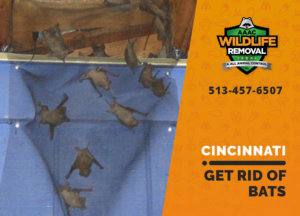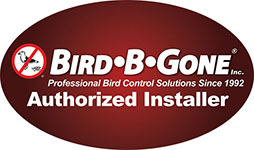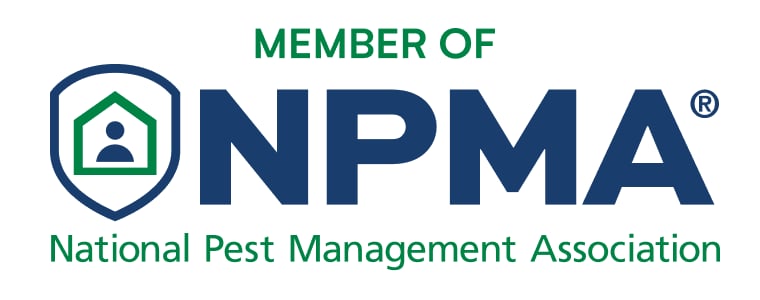
How to Get Rid of Bats?
Alright, let’s get down to business. Bats might seem like an insurmountable problem, but trust me, there are effective ways to handle this. The key is to understand that there isn’t a one-size-fits-all solution. You’ve got options, and we’re here to walk you through them.
First off, you need to assess the situation. How many bats are we talking about? One lonely bat or a whole colony? Identifying the extent of your bat problem is the first step in determining the best method to get rid of them. Once you know what you’re dealing with, you can choose the right strategy. Let’s break down some of the most effective methods.
Install Bright Lights
Bats are the ultimate night owls—they love the dark and hate the light. So, what do you do? Turn up the brightness! Installing bright lights in your attic or any other bat-prone area can make it incredibly uncomfortable for them to stay.
Types of Lights to Use
LED floodlights are a fantastic option because they are energy-efficient and super bright. Motion-activated lights can also work wonders by startling bats every time they try to settle in.
Light Installation Tips
You’ll want to install these lights at night when the bats are out feeding. Trust me, you do not want to be in their space when they’re home. Position the lights to cover as much area as possible and keep them on throughout the night. This constant illumination will make your attic feel like Times Square—totally uninviting for bats.
Duration and Timing
Keep the lights on for several days to a week. Bats need a consistent disruption in their environment to decide it’s time to find a new hangout. Just be patient and persistent—your attic will soon be too bright for their taste!
Increase the Temperature
Bats love cool, damp places to roost, so why not turn up the heat and make your attic feel like a sauna? By increasing the temperature in their nesting areas, you can create an environment that’s too hot for comfort. Portable electric heaters are a good option for this task. Place them strategically around the attic, aiming for even heat distribution.
Be sure to monitor the temperature closely—you don’t want to create a fire hazard. This method won’t work overnight; you’ll need to keep the heaters running for several days to make the area inhospitable for bats. As the heat dries out the moisture and raises the temperature, bats will start seeking cooler, more comfortable roosting spots elsewhere. Just remember, patience is key. The bats will leave when their cozy attic hideaway becomes too unbearable.
Exclusion

Exclusion is all about letting bats out but not back in. Since bats can squeeze through tiny cracks and gaps, the first step is to identify all possible entry points. Look for openings as small as half an inch around your home—these could be in your roof, walls, eaves, or vents. Once you’ve identified these entry points, you can install one-way exclusion devices.
These devices allow bats to exit but prevent them from re-entering. The best time to install these is just after dusk when bats leave to feed. Ensure all exits are covered and that bats have a way out but not back in. It’s a bit of a labor-intensive process, but it’s highly effective. After a few nights, once you’re confident all bats have exited, you can seal up the entry points permanently. This method ensures that your home remains bat-free without harming the bats, which is crucial since many bat species are protected by law.
Clean up the Mess
Once the bats have vacated your attic, it’s time to roll up your sleeves and tackle the cleanup. Bats can leave behind quite a mess, including droppings (guano), urine, and even carcasses. Cleaning up bat guano is not just about aesthetics; it’s also a health issue. Bat droppings can harbor harmful fungi that cause histoplasmosis, a serious lung infection.
Always wear protective gear such as gloves, masks, and long sleeves when cleaning up bat mess. Start by carefully collecting the droppings and disposing of them safely. Use a vacuum with a HEPA filter to clean up any remaining debris, and scrub surfaces with a disinfectant to kill any lingering pathogens. It’s also a good idea to check for any damage the bats might have caused, like chewed wires or damaged insulation, and make necessary repairs.
If the task seems too daunting, don’t hesitate to call in professional cleanup services. They have the expertise and equipment to handle the job safely and thoroughly, ensuring your attic is clean and safe to use again.
Seal the Cracks
With the bats gone and the mess cleaned up, your next mission is to bat-proof your home to ensure they don’t come back. Bats are sneaky little creatures that can squeeze through tiny openings, so it’s crucial to seal all potential entry points. Conduct a thorough inspection of your home, paying special attention to areas like roof edges, soffits, vents, chimneys, and any cracks or gaps in the walls. Use materials such as caulk, steel wool, and weatherstripping to seal smaller gaps.
For larger openings, heavy-duty materials like metal mesh or flashing are more effective. Don’t forget to check and repair screens on windows and vents. This task might be tedious, but it’s essential for long-term prevention. Regularly inspect these areas to ensure they remain secure, especially before the bat season starts. A well-sealed home is the best defense against future bat invasions.
Natural Repellents
If you’re looking for a more natural way to keep bats at bay, consider using essential oils and other natural repellents. Bats have a strong sense of smell, and there are certain scents they simply can’t stand. Peppermint and eucalyptus oils are known to repel bats effectively.
Mix a few drops of these oils with water in a spray bottle and generously apply it around the areas where bats tend to roost, like attics and entry points. Another natural deterrent is mothballs, which emit a strong odor that bats find unpleasant. Place them in mesh bags and hang them in bat-prone areas. Additionally, you can use ultrasonic sound devices, which emit high-frequency sounds that are annoying to bats but inaudible to humans.
These devices can be placed around your home to create an inhospitable environment for bats. While natural repellents might not be as effective as other methods, they can be a good supplementary measure to keep bats from returning.
Professional Bat Removal Services
Sometimes, despite your best efforts, bats can be particularly stubborn or the infestation too severe to handle on your own. That’s where professional bat removal services come into play. At AAAC Wildlife Removal of Cincinnati, we bring expertise, experience, and the right tools to effectively and humanely remove bats from your property.
Our team starts with a comprehensive inspection to identify all entry points and assess the extent of the infestation. We then develop a customized removal plan, using humane exclusion techniques to ensure the bats can leave but cannot return.
Professional services also take the guesswork out of the cleanup process. We handle the removal of bat guano, decontamination of affected areas, and repairs to any damage caused by the bats. Additionally, we provide long-term solutions to bat-proof your home, sealing entry points and offering advice on preventative measures.
Hiring professionals not only ensures that the bat problem is resolved thoroughly and humanely but also gives you peace of mind knowing that your home is safe and protected from future infestations. If you’re dealing with a bat problem, don’t hesitate to call in the experts at AAAC Wildlife Removal of Cincinnati. We’re here to help you reclaim your space from these unwelcome visitors.













